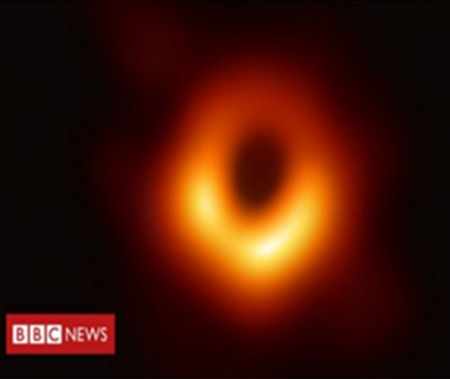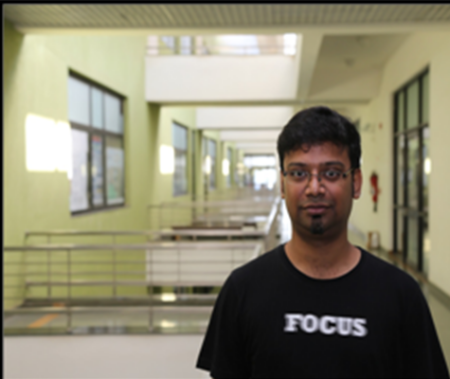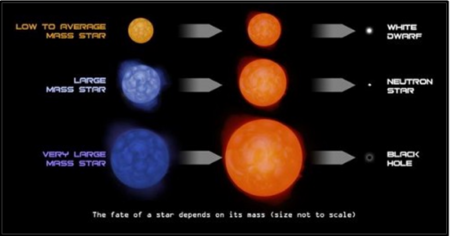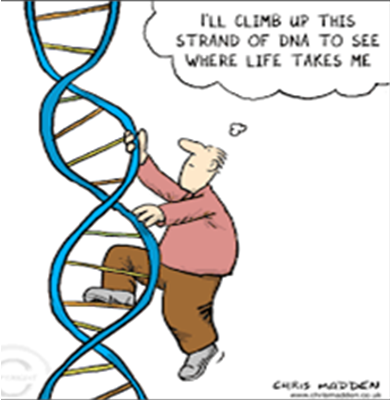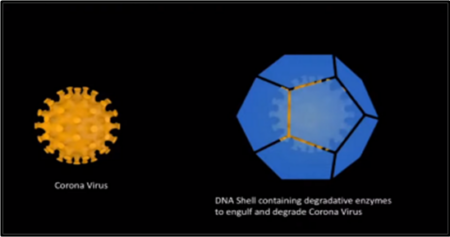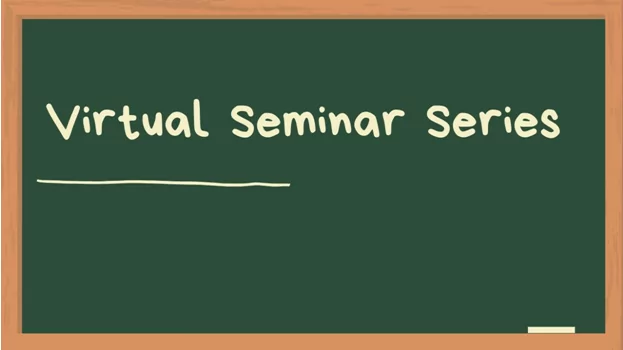
The horrors of the current COVID-19 pandemic have led the governments across the world to shut the educational institutes as an attempt to keep the students and others out of the clutches of this viral illness. As a result of this, the global education system has changed drastically, with online learning becoming the major and perhaps, the only source of imparting education in the present times. This type of learning undertaken through digital platforms is highly advantageous as students can participate in it from the comfort of their homes. Moreover, they mostly have the freedom to learn from such classes and sessions at any time of the day, and that too multiple times (if needed). It also helps in providing a sense of satisfaction that their time is being utilized constructively and they are not lagging behind on their academic curriculum.
Understanding the value of e-learning amid the current crisis, the professors of IIT Gandhinagar have started a Virtual Seminar Series. It is an online program initiated as a means to engage not just the students, but the general public as well, so that they can explore and learn about a diversity of topics, in an interesting manner.
The first lecture of this series was delivered by Sudipta Sarkar, Associate Professor in Physics. It was an adventure to the world of black holes! It provided a crisp understanding of these objects in the universe whose gravitational pull is so strong that even light cannot escape from them. Starting the story from 1783, Prof. Sarkar talked about how John Michelle wrote a letter to Henry Cavendish stating that a body so powerful can be created, and it eventually got the name of the Dark Star, based on Newton’s theory. But in this case, the interaction between light and gravity was unclear!
Fast forward to the 20th century, it was Albert Einstein who, after analyzing the works of Newton and Maxwell, gave the theory of general relativity, and its equation was eventually solved by Karl Schwarzschild. It said that there exists an imaginary boundary around a spherical object. The radius of this object is such that once we go inside it, we can’t come back! It is a one-way surface and explains the interaction between light and gravity. It is known as the Blackhole.
Prof Sarkar progressed to talk about Subrahmanyan Chandrasekhar, who said that there is a critical mass. It is about 1.4 times the solar mass and when a star with a mass less than this value exhausts its fusion material, it becomes a white dwarf. Stars with masses more than this value in the range of approximately 10-30 solar masses, after exhausting their hydrogen, collapse and form a neutron star. Similarly, stars with more than 30 solar masses, continue to collapse into a smaller structure. This condition was analyzed by scientists Datt, Oppenheimer, and Snyder, and they stated that it results in the formation of Blackholes. Scientists also believe that there is a supermassive Blackhole, many million times bigger than the Sun’s mass, at the center of each galaxy. Several images from telescopes indicate that there is a central black region (Blackhole), which the light unevenly surrounds. It is because of an asymmetry caused due to gravity and implies that we are looking at a rotating Blackhole.
Image Source: Pinterest
As a result of emitting radiation, the mass, and radius of Blackhole decreases. Ultimately, its temperature increases, and it emits more radiation and becomes smaller, indicating instability that suggests a possibility of complete Blackhole evaporation. But, it is still unknown what happens at the last stage of this evaporation. Furthermore, it is said that the Blackholes erase all information in the end. According to the laws of Physics within the quantum theory, information cannot be erased. Therefore, it points towards a paradox!
Blackholes are thought of as math-labs to analyze the fundamental laws of physics. Their properties can provide the groundwork towards deciphering new laws of nature. Many questions still revolve around these fascinating objects. It is widely believed that their detailed study will provide us with clues in understanding pretty much the theory of everything!
Dhiraj Bhatia, Assistant Professor in Biological Engineering, delivered the second lecture of this series, and it was about having fun with biology by carpentry with the molecule of life (DNA)! Nucleic acids (DNA and RNA) and proteins are the buzzwords of today’s research because their structures encode information critical for life. But, DNA is chosen over proteins since proteins (made up of amino acids) can be folded in a variety of 3D shapes. Moreover, these structures also form complicated quaternary structures. In contrast, it is easier to play with DNA because it is a simple duplex just like entangled noodles. It is made up of adenine, thymine, guanine, and cytosine and they can self-assemble specifically with each other using the Watson-Crick base-pairing. We can explore unlimited DNA structures based on it.
DNA has three properties – structural simplicity, robustness, and designability. Structural DNA nanotechnology is the field that utilizes DNA as a building block. The greatest advantage of this is that DNA encodes crucial information and it is being translated into useful devices, ranging from as minute as five nanometers up to 100s of nanometers.
Prof. Bhatia highlighted that DNA nanodevices have many uses, viz., as bioimagers, biosensors, and therapeutic agents. Taking the example of C. elegans, a 1mm long transparent nematode, it is seen that after injecting these DNA devices inside the organism, we can see where they go. These devices can be modified in a way so that they travel to a specific region inside the body. This process helps in the mapping of pH, different ions, and metabolites in those cells at different time points. It can be correlated with several ailments and diseases. It is also observed that a simple medication when injected inside the nematode diffuses throughout its body. The same drug, when trapped inside the DNA cage and injected, goes only to those cells that express receptors for it. This drug-DNA cage complex reaches and acts on a specific body site based on the address of that location. Called tagging, it is the process of coupling proteins, small molecules, sugars, peptides, etc. on the cage-surface at a very specific place.
When chemotherapy is given to cancer patients, a bulk of this medication diffuses to other body locations, which causes damages like eyebrow and hair thinning, skin and kidney shrinking, and so on. If we can encapsulate these drugs into DNA cages and tag them so that they can reach the diseased cells and release the medication in the affected area, it will greatly help in decreasing the side effects of chemotherapy! Talking about the current crisis, scientists across the world are trying to explore DNA nanotechnology to block and degrade SARS-CoV-2, based on the logic of a DNA cage containing enzymes. The cage can engulf the virus and the enzymes can destroy it. This technique, if used efficiently, can remove a large number of virus particles from the patient’s body, thereby providing them some therapeutic relief. Renowned biophysicist Hendrik Dietz and his lab are greatly exploring this domain as a means to combat COVID-19.
To summarize, the intriguing field of structural DNA nanotechnology has evolved constantly over the last 25-30 years, and at present, it is working at the interface of several biology-related areas and is focusing on biomedical applications for the betterment of humankind.
So, friends, I will soon be back with a summary of other interesting lectures from this series. These seminars are, indeed, a good way to learn about a lot of complex topics in an easy and captivating way! Stay tuned for more!

